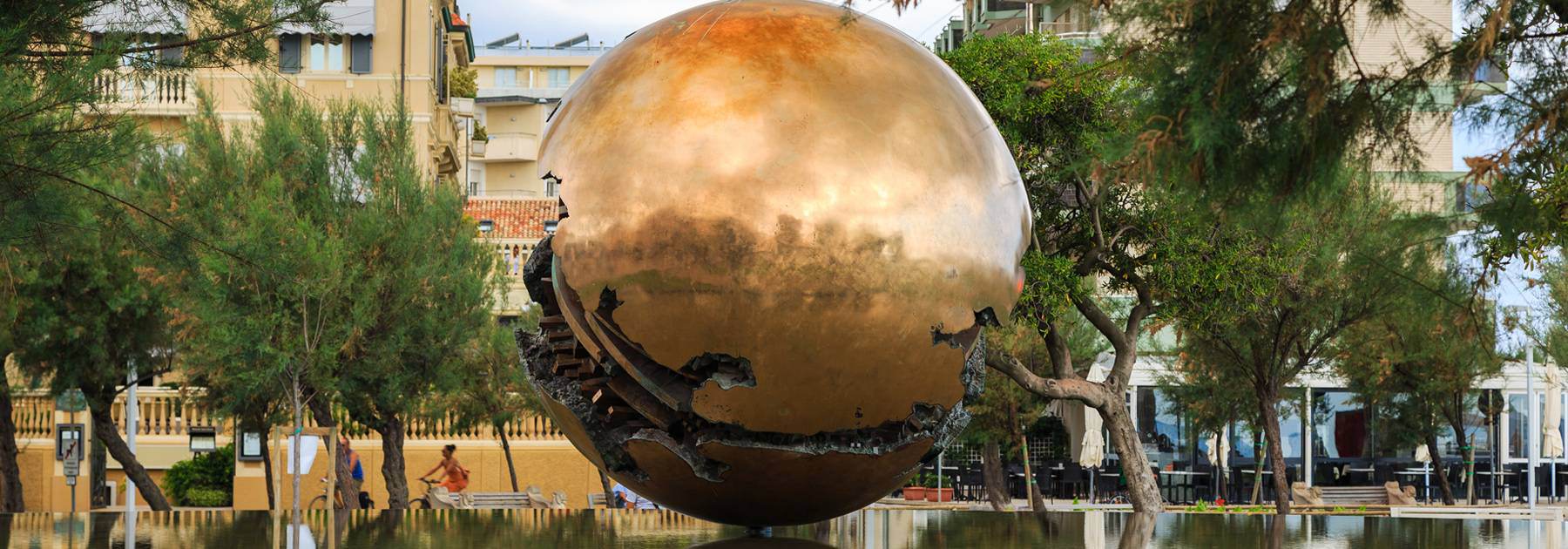Pesaro is situated on the Adriatic coast in the alluvial plain to the mouth of the river Foglia. Heading for the sea, the city extends between the necks of San Bartolo on northwest and Ardizio on southeast, including the ancient historical center. The home of Gioacchino Rossini, the city has many artistic and musical traditions: the Rossini theatre, the Rossiniano Museum, the Academy of Music, the Institute of Art, etc. Taking place annually is a festival of Rossiniane music and a film festival. Pesaro was also the home of the explorer A. Cecchi. There have been many archaeological finds from to the Roman city. The first artistic documents of interest are a notable group of Romanesque-Gothic churches with several original features still remaining: the face of the cathedral (end of the XIII sec.), the beautiful portals of Sant’Agostino (1413), of St. Francesco (1356-1373) and of St. Domenico (1395), this last on the side of the building of the Mail, a neoclassical building obtained from the body of the church by L. Poletti (1848). Up to the advent of the Renaissance, the artistic environment of Pesaro has several links with Venetian art, confirmed by some Venetian paintings in the civic Museum (Jacobello del Fiore). The Renaissance is represented in the harmonic Palazzo Ducale, built under the orders of Alessandro Sforza in the second half of the XV sec., and reconstructed after a fire by Bartholomeo and Girolamo Genga.
The Laurana, present in the city in 1476, contributed to the construction of the Costanza fortress, a remarkable example of military architecture, started in 1474. Near to the city on the hill of St. Bartolo, is the Imperial Villa which owes its name to the emperor Federico III of Hapsburg who witnessed the foundation as guest of the Sforza in 1452. It was mainly reconstructed under the Della Rovere starting from 1530 by Girolamo Genga, author also of a large part of the interesting decoration, for which Menzocchi, Dossi, Bronzino and Perin del Vaga also participated.
In the civic museum, situated in the Palazzo Mosca (G. A. Lazzarini, XVIII sec.), is highlighted the altar piece of the Incoronazione della Vergine by Giovanni Bellini and a precious collection of majolicas. The Oliveriana Library, with its many manuscripts and incunabulum is annexed to an archaeological Museum, especially noted for iron age finds coming from the necropolis of Novilara.

